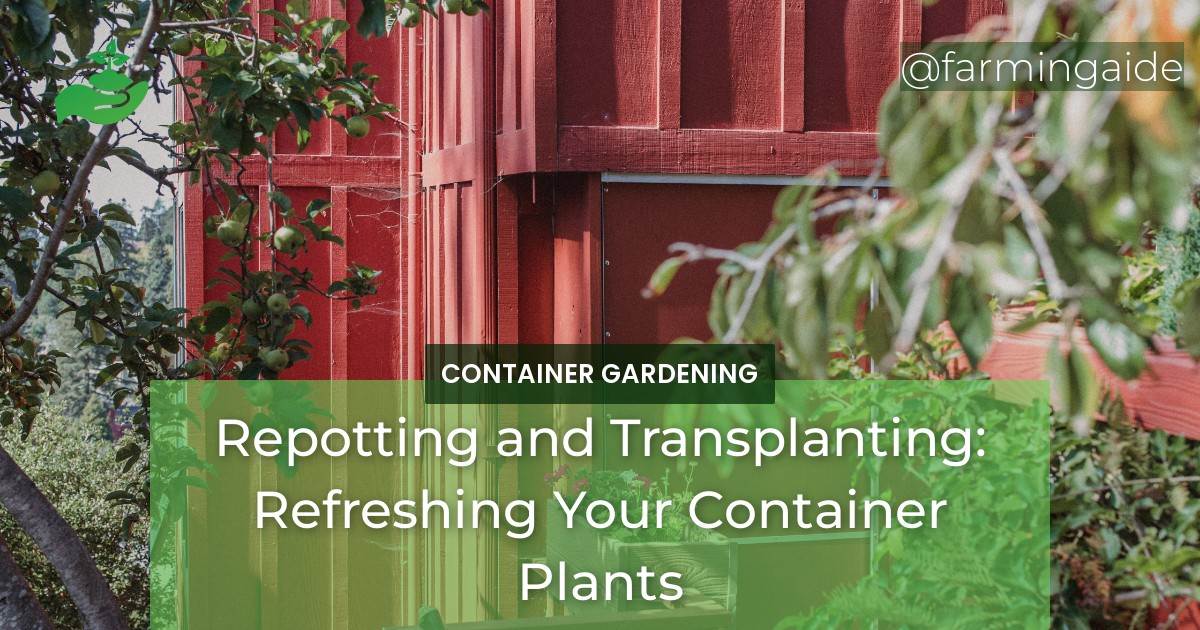Container gardening is a wonderful way to add some greenery to your home, without the need for a yard. Container plants are not only easy to maintain, but they can also enhance the aesthetics of your living space. However, over time, container plants can become root-bound, leading to stunted growth and unhealthy plants. This is where repotting and transplanting container plants come in.
In this article, we will discuss the importance of repotting and transplanting container plants, as well as provide tips on how to do it effectively.
Table of Contents
When to Repot Your Container Plants
Repotting your container plants is essential for their growth and development. Here are some signs that indicate it’s time to repot your container plants:
- The roots have started to emerge from the drainage holes at the bottom of the pot.
- The soil dries out quickly, indicating that the roots have taken up all the space in the pot.
- The plant appears top-heavy, indicating that the roots have outgrown the pot.
It’s important to repot before the roots become too cramped, as it can limit the plant’s growth and cause it to become root-bound.
How to Repot Your Container Plants
To repot your container plants, you will need the following materials and tools:
- A larger pot
- Fresh potting soil
- A trowel or garden fork
- A watering can or hose
Here are the steps to repot your container plants without damaging them:
- Water the plant a day or two before repotting to make it easier to remove from the pot.
- Carefully remove the plant from the pot, gently loosening the soil around the edges.
- Inspect the roots and remove any that are dead or damaged.
- Place fresh potting soil in the new pot, filling it about a third of the way.
- Hold the plant in the center of the new pot and fill it with soil, pressing it down firmly around the roots.
- Water the plant thoroughly, making sure the soil is well-moistened.
ALSO READ
When to Transplant Your Container Plants
Transplanting is necessary for certain plants, such as those that have outgrown their current pot or those that need to be divided. Here are some signs that indicate it’s time to transplant your container plants:
- The plant has outgrown its current pot and there is little room for any new growth.
- The roots have become tangled and are growing in circles around the pot.
- The plant has stopped growing or is showing signs of nutrient deficiencies.
How to Transplant Your Container Plants
To transplant your container plants, you will need the following materials and tools:
- A larger pot
- Fresh potting soil
- A trowel or garden fork
- A watering can or hose
Here are the steps to transplant your container plants without damaging them:
- Remove the plant from the pot, gently loosening the soil around the edges.
- Use a sharp knife or scissors to divide the plant if necessary.
- Place fresh potting soil in the new pot, filling it about a third of the way.
- Hold the plant in the center of the new pot and fill it with soil, pressing it down firmly around the roots.
- Water the plant thoroughly, making sure the soil is well-moistened.
Tips for Maintaining Healthy Container Plants
To keep your container plants healthy and thriving, consider the following tips:
- Choose the right pot size for your plant.
- Use a high-quality potting soil that provides adequate drainage.
- Water your plants regularly, but avoid overwatering.
- Fertilize your plants with a balanced fertilizer every few weeks.
- Rotate your plants regularly to ensure even growth.
To prevent the roots from becoming too cramped, consider repotting or transplanting your container plants every 1-2 years.
ALSO READ
How can I safely repot and transplant my container plants to create a colorful garden design?
When preparing to repot and transplant your container plants to create a vibrant and colorful container garden design, ensure you choose the right-sized pots with good drainage. Loosen the root ball gently and use high-quality potting mix. Water thoroughly after transplanting to reduce shock and establish strong, healthy roots.
Conclusion
Repotting and transplanting are important steps in maintaining healthy and thriving container plants. These steps can help prevent root-bound plants, plant division, and rejuvenate container plants. By following the tips and steps outlined in this article, you’ll be able to refresh your container plants and keep them growing strong for years to come.
RELATED ARTICLES:


